Paul Morris is a graphic designer and writer who collects album art of the 1940’s and 1950’s. He finds his examples of influential mid-century design in the used record stores of Portland, Oregon.
In this edition, Paul features examples of vintage kitsch on several themes
__________
It’s summer, and my interest has strayed from the realms of high design and good taste. I pulled out a few examples of vintage kitch on several themes. There are some dated notions of style, some inexplicable graphic devices, towering hairdos, and even Ed Sullivan.
_____
“Smoking” was one of the first album art themes I became aware of. You could amass a large stack of records from the decades when cancer sticks were cool. I have just a few, starting with Music for the Quiet Hour (1955). That is the cocktail and cigarette hour, when you have “those weary, end-of-a-frantic-day blues,” according to the liner notes. The lady styles a silver cigarette holder.
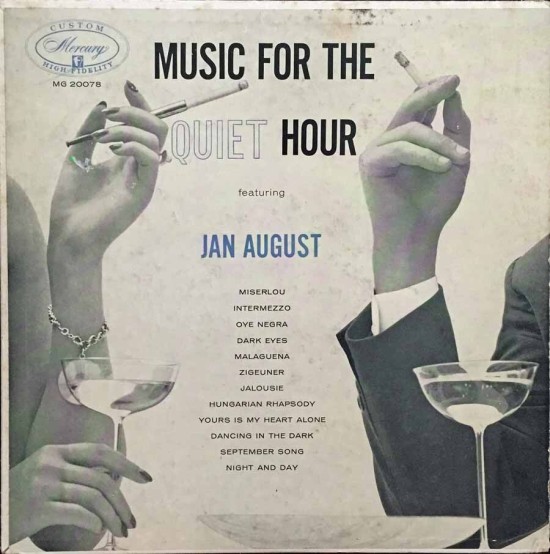
.
__________
In this layout the trumpeter Clyde McCoy blows menacingly from the upper corner while the couple at the table smoke, unconcerned. Photos showing attractive women exhaling were thought to be sexy.
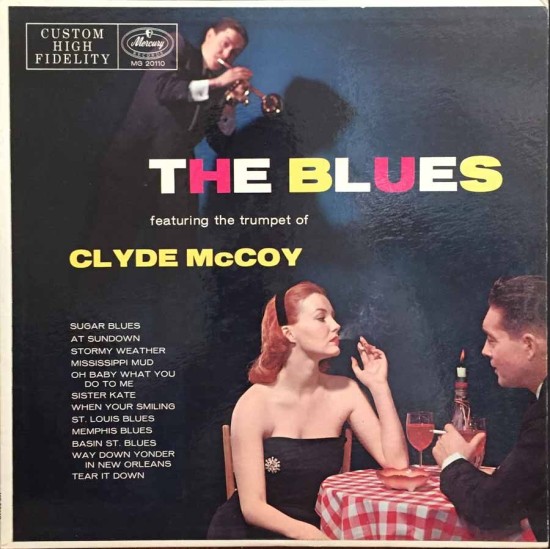
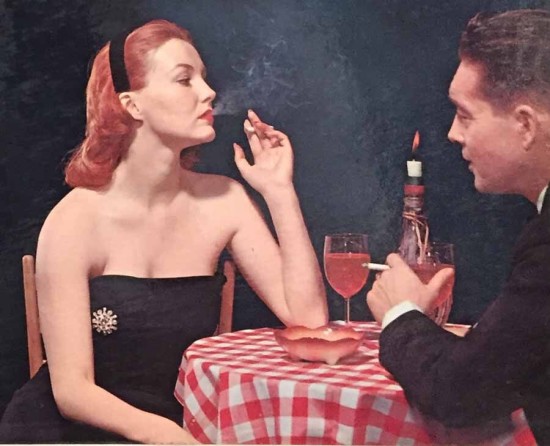
__________
“Two Cigarettes in the Dark” is a 1935 song recorded by Bing Crosby. The cig is a symbol of love: “Gone is the flame in the spark, / Leaving just regrets and two cigarettes in the dark.” The cover photo from 1957 shows how romantic it was to get a light in this intimate way from a tall, dark handsome man.
The still life on the cover of Cocktail Hour in Berlin shows clear gender differentiation of the smokes. The gentleman has a gross-looking cigar, and his companion left a lipstick smudge on her cigarette. Through the window is the Kempinski Hotel, still there on the Kurfürstendamm shopping boulevard.
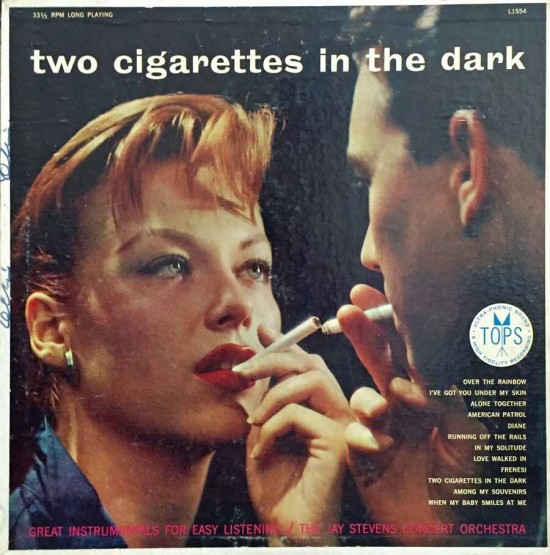
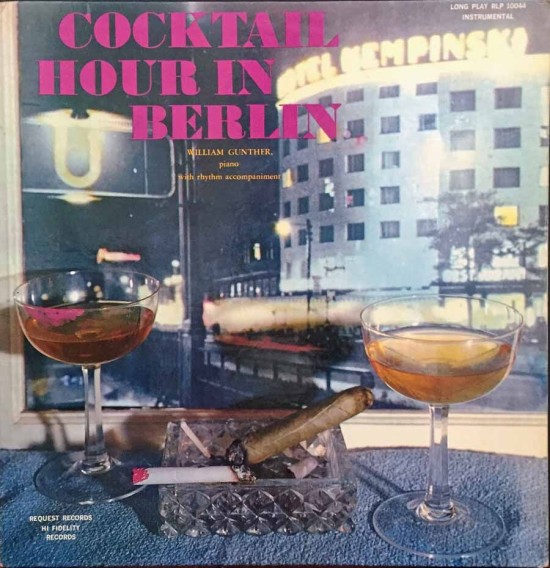
__________
Stan Kenton playing the music from Hair was a desperate attempt by a jazz group to appeal to the youth audience. It was 1969, a low ebb in jazz’s popularity, but that doesn’t explain this bizarre photo. I now regret that I didn’t save the record, as now I see that Jack Sheldon, an esteemed trumpeter, was in the band, and was featured in their version of “Sodomy.”
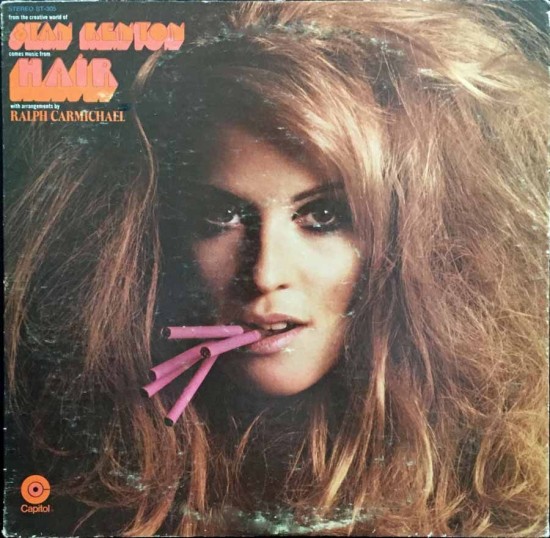
__________
From nicotine I’ll now move to “People Listening to Records.” The first one is for practicing stenography. I remember those phones with six buttons. In the next cover, Ed Sullivan seems to be wondering when his listening session will be over. His record player is a portable stereo unit with detachable speakers.
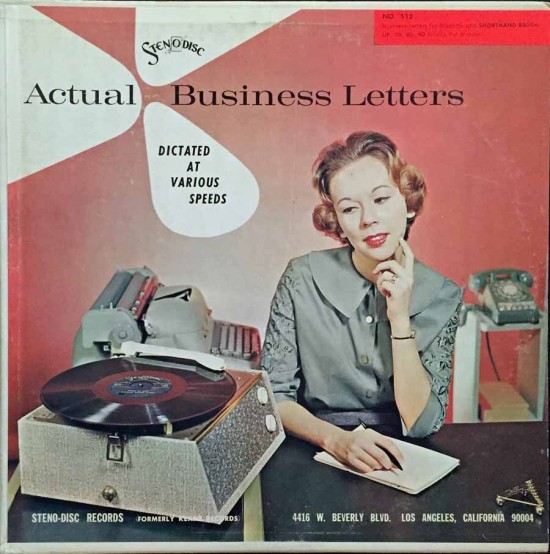

__________
In I Hear Music, from ca. 1959, the boy is listening to a large console stereo. The photo of the strange ventriloquist’s doll singing to a group of six girls and one boy features Little Marcy, the singing Christian puppet from Eugene, Oregon, voiced by Marcy Tigner. Her selections include “When Mr. Satan Knocks at My Heart’s Door” and “I’m in the Lord’s Army.”
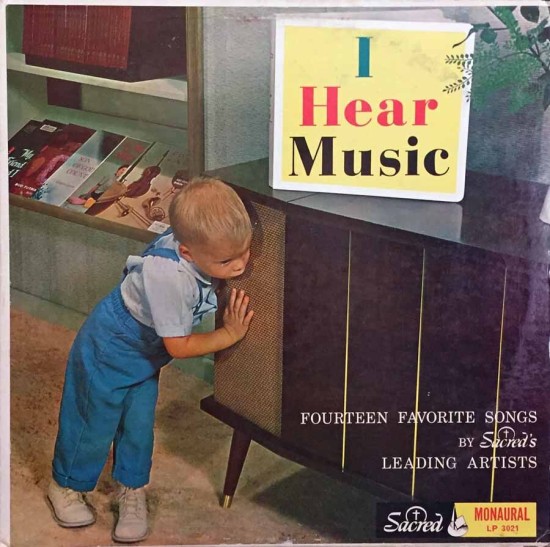
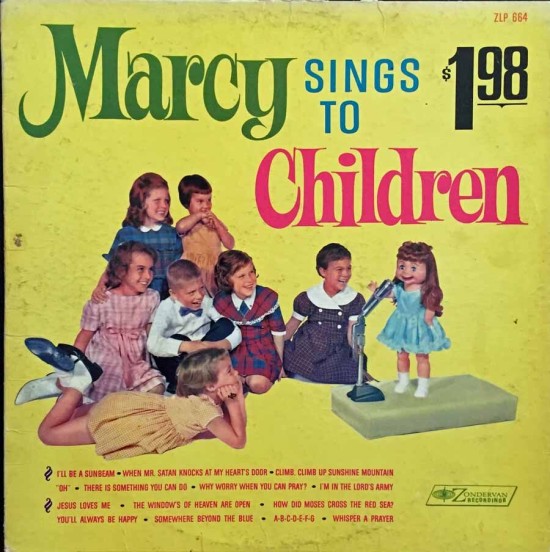
__________
Another theme that could fill crates of albums is “Firearms.” These two show “Double-Barrelled Hits” and themes from TV Westerns. The second photo is carefully composed, and actually could have been photo-directed by Alex Steinweiss, a freelancer for Coral at this time, 1959.
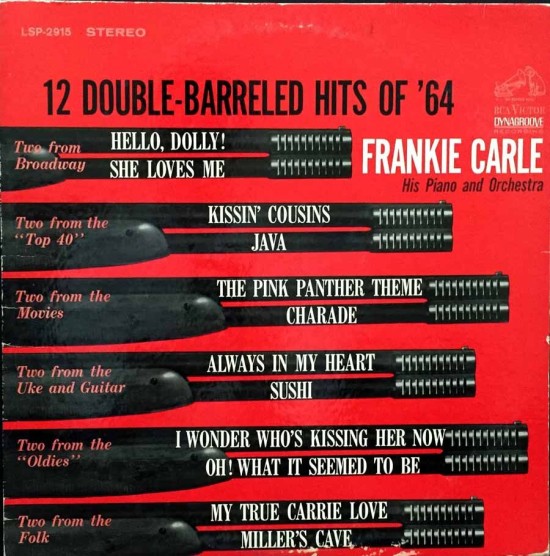
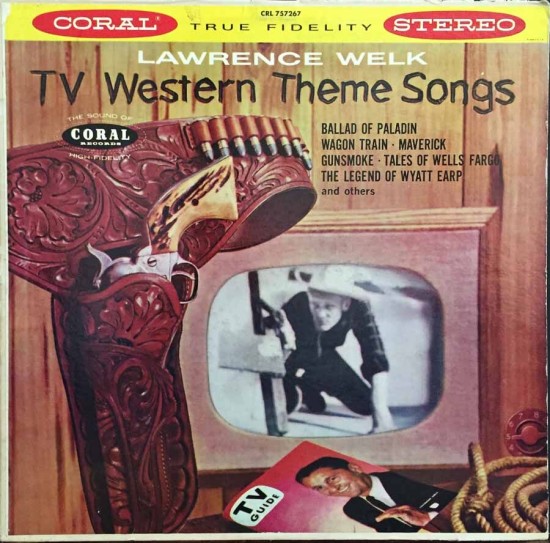
__________
The “Glamour of Bearskin Rugs” seemed an obvious theme. These furry props suggested animal urges and sensuality. In Organ Favorites note the mid-fifties chair and the chic cocktail glasses. The gentleman also wears a suit in Continental Gems; his fingers are oddly long. The photo, credited to Victor Mikus, features an ashtray and a dingy-looking bear.
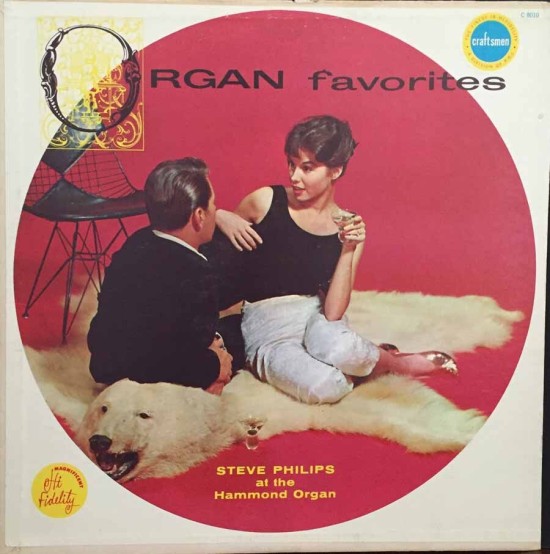
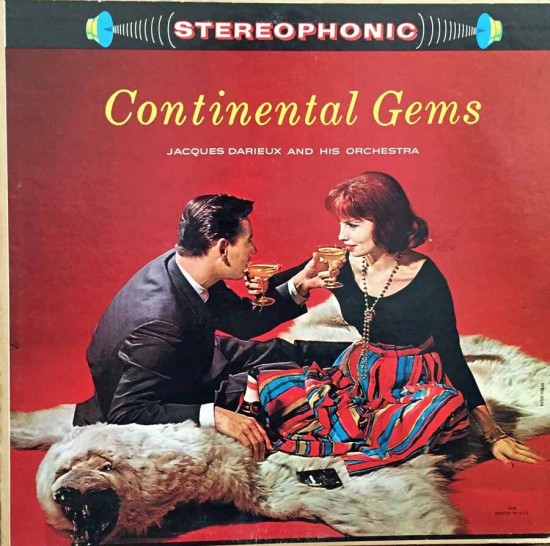
__________
The liner notes for this album with the model caressing the stuffed tiger actually quotes the line from Congreve, “Music hath charms to soothe a savage breast.” The hackneyed notes go on to say that this selection of love songs is “designed to quiet your cares and set you aglow.” Photo by Hal Buksbaum. In the Claude King album both the tiger and the woman look you in the eye. The Ferrante & Teicher album reminds me of the cougar-skin rug that my Uncle Ray had in his living room. The first thing a small kid wants to do is stick his hand in the beast’s mouth.
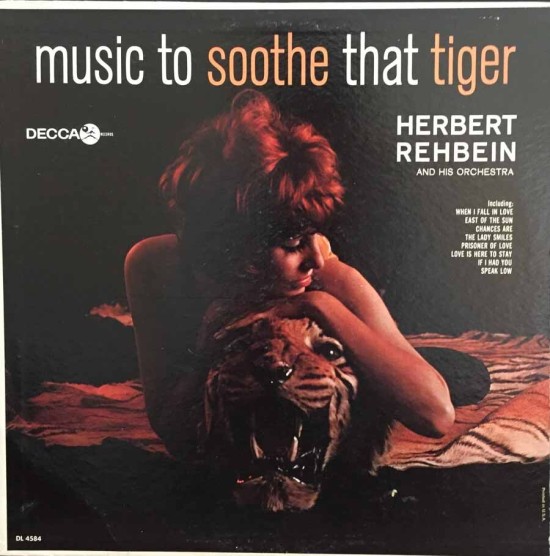
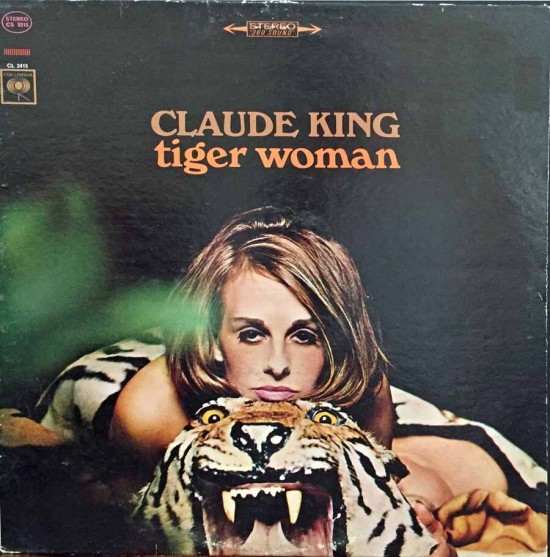
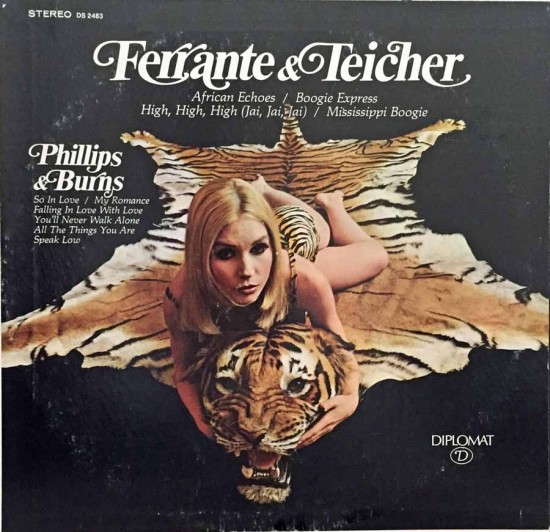
__________
My last category for this summer trip into questionable taste is “Unusual Evangelists.” Additional keyword: Big Hair. They don’t make hairdos anymore like Mother Rambo’s tall pile in The Soul Singing Rambos. Daughter Dottie has a more restrained do. In the Kroezes family, the younger girl isn’t going along with the big hair.
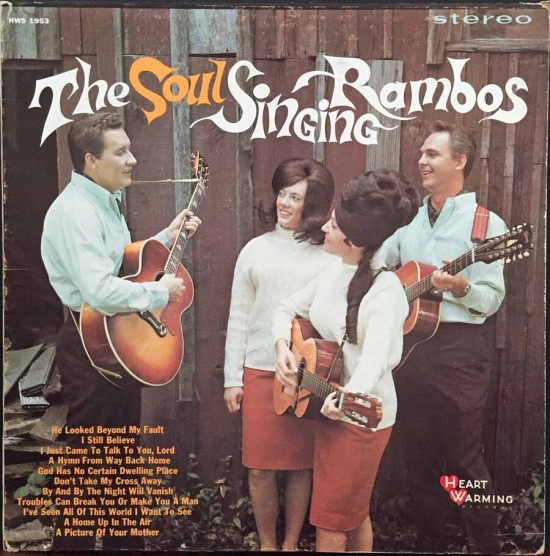
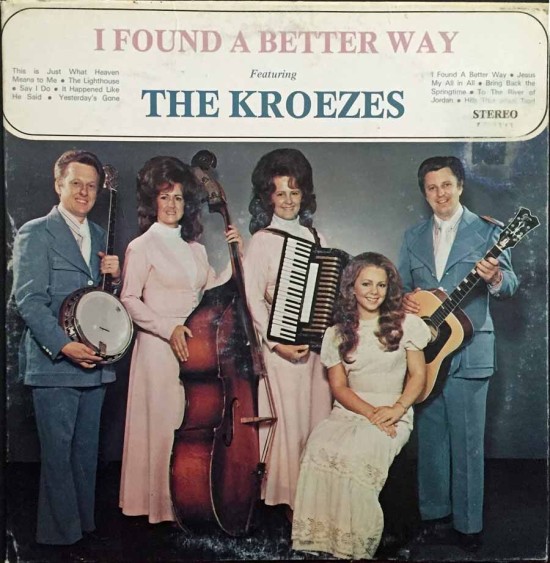
__________
The Good Twins, Dwight and Dwayne, apparently ran out of gas in this Robert Bolen photo. One of them stayed behind, cooling his heels and reading his bible. The title, “Have Gospel—Must Travel” is a play on the TV series Have Gun, Will Travel. The twins traveled 40,000 miles in one year of musical evangelizing.
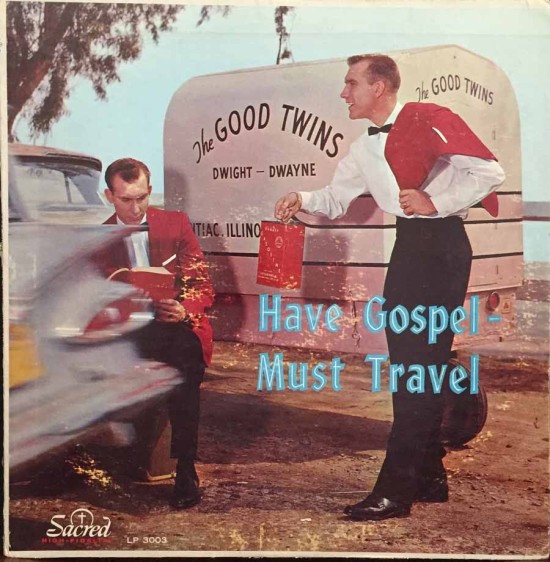
*
Next time: Paul shows some Alex Steinweiss albums from his early years.
__________
In Volume 1 of “Cover Stories,” Paul shared his collection of covers by Alex Steinweiss, known as the father of the record album cover, and for many years in charge of Columbia Records’ art department.
Volume 2 focused on Columbia covers
Volume 3 featured jazz illustrations from the early years of the record album
Volume 4 revisited the 1950’s with images of fans holding and enjoying their albums
Volume 5 explored the work of Alex Steinweiss when he used the pseudonym “Piedra Blanca”
Volume 6 featured teenagers of the 1950’s enjoying their music
Volume 7 featured Steinweiss album covers from his prime period — the late 1940’s and early 1950’s
Volume 8 featured a “disturbing” and fascinating trend in 1950?s album art — Records on the Floor!
Volume 9 featured a selection of RCA Victor album covers from Paul’s collection
Volume 10 featured a selection of covers by Curt John Witt, the prolific illustrator for mid-century budget record labels
Volume 11 featured a selection of “glamour girl” covers
Volume 12 featured the “late Columbia” era of master designer Alex Steinweiss
Volume 13 focused on Everest Records, the last of several new labels that Alex Steinweiss helped launch
Volume 14 Paul shares some of his personal jazz record collection, concentrating on the lesser known and sometimes quirky covers that emphasize photographs
Volume 15 took a look at the art of London Records
Volume 16 Paul shared some jazz covers from the 1950’s
Volume 17 looked at the album cover art of Erik Nitsche, a pioneer of modern design
Volume 18 featured album covers picturing designer furniture
Volume 19 showcased choice examples of Decca Records









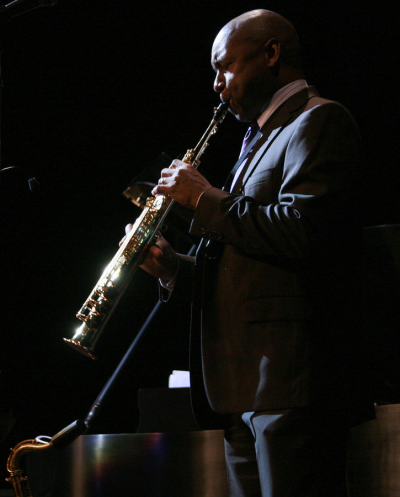






























Oh, my God, the HAIR! And the heat! Loved seeing Ed Sullivan again. 🙂
Oh, my God, the HAIR! And the heat! Loved seeing Ed Sullivan again. 🙂
Hey Paul. Great meeting you in Hood River this weekend. Great articles here. Lots of fun. Nicely done. If you haven’t done so already I also suggest exploring the LP covers from the Dot Records label. Some terrific mid-century classics including one of my favorite voices of all-time; a Ken Nordine word jazz recording (or two). -Ron Maita
Hey Paul. Great meeting you in Hood River this weekend. Great articles here. Lots of fun. Nicely done. If you haven’t done so already I also suggest exploring the LP covers from the Dot Records label. Some terrific mid-century classics including one of my favorite voices of all-time; a Ken Nordine word jazz recording (or two). -Ron Maita